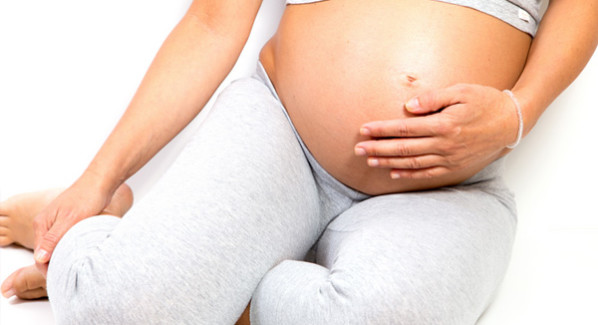Medical Information (Obstetrics)
Hemorrhoids and Varicose Veins in Pregnancy
What are hemorrhoids and varicose veins?
Hemorrhoids and varicose veins might seem to be two different, unrelated problems, but they are actually quite similar. And, many women, especially those in the third trimester of pregnancy, have them.
Both hemorrhoids and varicose veins are swollen, twisted veins. These veins are often in the legs, but they also can form in other parts of your body. When they form in the rectum, they are called hemorrhoids.
What causes hemorrhoids and varicose veins in pregnancy?
Normally, veins have one-way valves to help keep blood flowing toward the heart. Pressure or weakening of these valves allows blood to back up and pool in the veins. This causes them to enlarge and swell. Hemorrhoids result when rectal veins enlarge. Varicose veins occur when veins of the legs swell.
Many changes in pregnancy can increase the risk of hemorrhoids and varicose veins, such as:
- Increased blood volume, which enlarges the veins
- The heavy weight of the growing baby, which presses on the large blood vessels in the pelvis, altering blood flow
- Hormone changes affecting blood vessels, which can slow the return of blood to the heart and cause the smaller veins in the pelvis and legs to swell
Hemorrhoids can get worse with pushing or straining, especially with constipation. Being overweight and having hemorrhoids before pregnancy can also make them worse. Pushing during delivery tends to worsen hemorrhoids, too.
Varicose veins tend to run in families. Sitting or standing in one position for a long time may force the veins to work harder to pump blood to the heart. This can result in swollen, varicose veins and can also worsen existing hemorrhoids.
What are the symptoms of hemorrhoids and varicose veins in pregnancy?
Hemorrhoids can be internal, forming inside the rectum, or external, located on the outside, around the anal opening. Internal hemorrhoids can sometimes bulge out through the anal opening. The most common symptom is bright red blood passed with a bowel movement. External hemorrhoids can be painful or itch, and may bleed if irritated by straining or wiping.
Varicose veins often look like large, twisted, raised blue or purple veins on the legs – often on the backs of the calves or inside the legs. They may cause mild swelling in the ankles and feet, or aching, heaviness, or throbbing in the legs. They can also cause leg cramps.
How are hemorrhoids and varicose veins in pregnancy diagnosed?
Your healthcare professional will examine your legs and/or rectal area to check for varicose veins and/or hemorrhoids.
How are hemorrhoids and varicose veins in pregnancy treated?
Hemorrhoids in pregnancy are a short-term problem, and they get better after your baby is born. Still, there are some things you can do to relieve the discomfort:
- To relieve pain, sit in a tub or sitz bath several times a day in plain, warm water for about 10 minutes each time. When you use a tub bath, don’t fill the tub all the way. Just put in enough warm water to sit in. That will direct blood flow to your rectum.
- Use ice packs or cold compresses to reduce swelling.
- Ask your healthcare provider about creams or other medicines, such as stool softeners, that are safe to use during pregnancy.
It’s important to prevent constipation by including lots of fiber and fluids in your diet.
Also try not to strain with bowel movements, and avoid sitting for a long time. Regular Kegel exercises, which involve squeezing and relaxing the muscles in your vaginal and rectal area, can help improve muscle tone.
Most varicose veins that develop during pregnancy get better within the first year after birth. But for now, limit standing or sitting for a long time without a break, and try not to cross your legs. Also try to raise your legs and feet whenever you’re sitting or lying down.
Avoid tight clothing around your waist, thighs, and legs, as it can worsen varicose veins.
Be sure to check with your healthcare provider if your symptoms worsen or you have excessive bleeding from hemorrhoids. And remember that these problems are usually short-term and get better after delivery with time and treatment.
What can I do to prevent hemorrhoids and varicose veins in pregnancy?
The best way to help prevent hemorrhoids during pregnancy is to avoid getting constipated. If you are constipated, avoid straining during bowel movements.
Steps to help prevent varicose veins are the same as those used to decrease symptoms:
- Do not stand still or sit for long periods of time.
- Prop your feet up whenever possible.
- Do not wear tight clothes.
Copyright 2016 by eyemails.com
 ##
##


